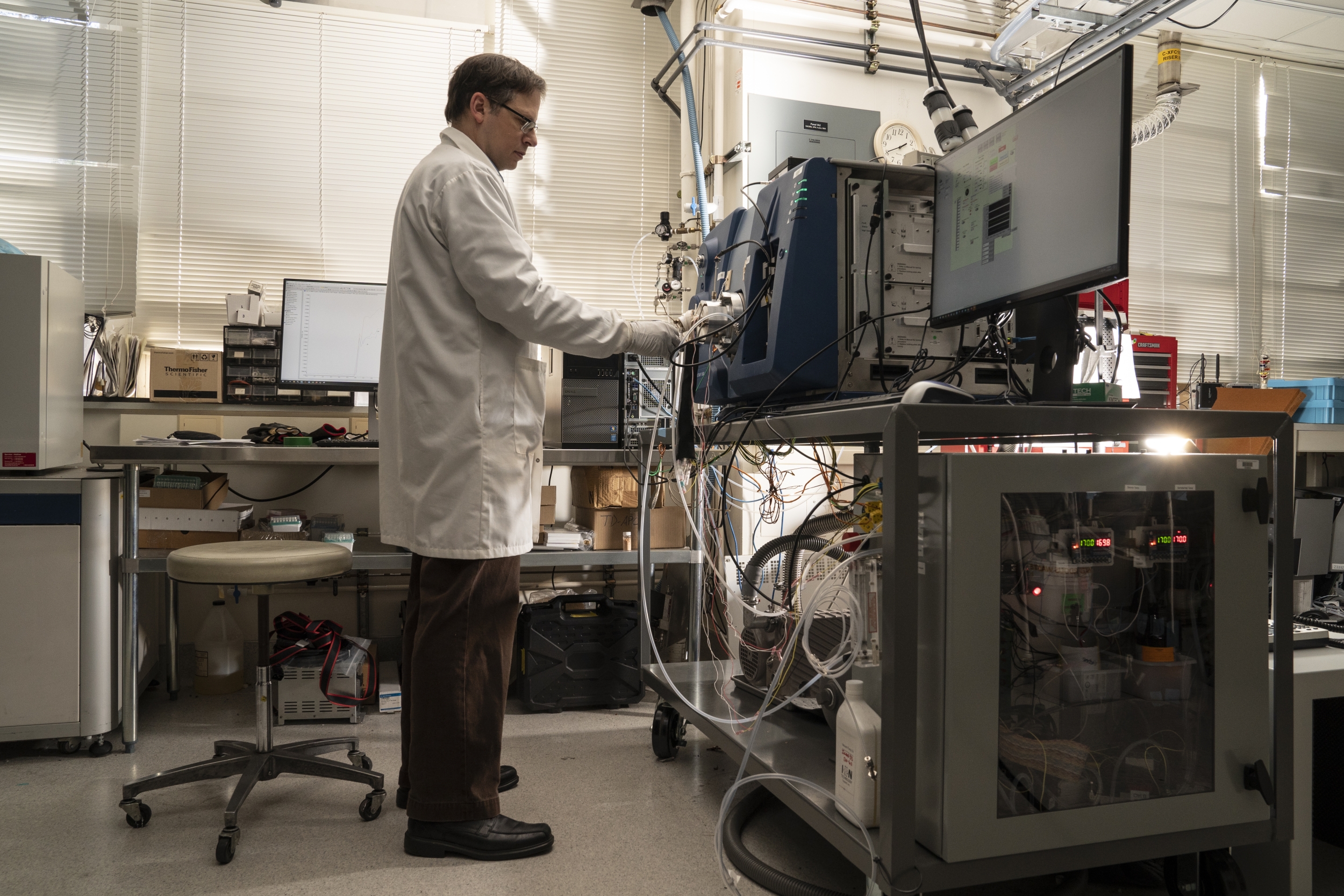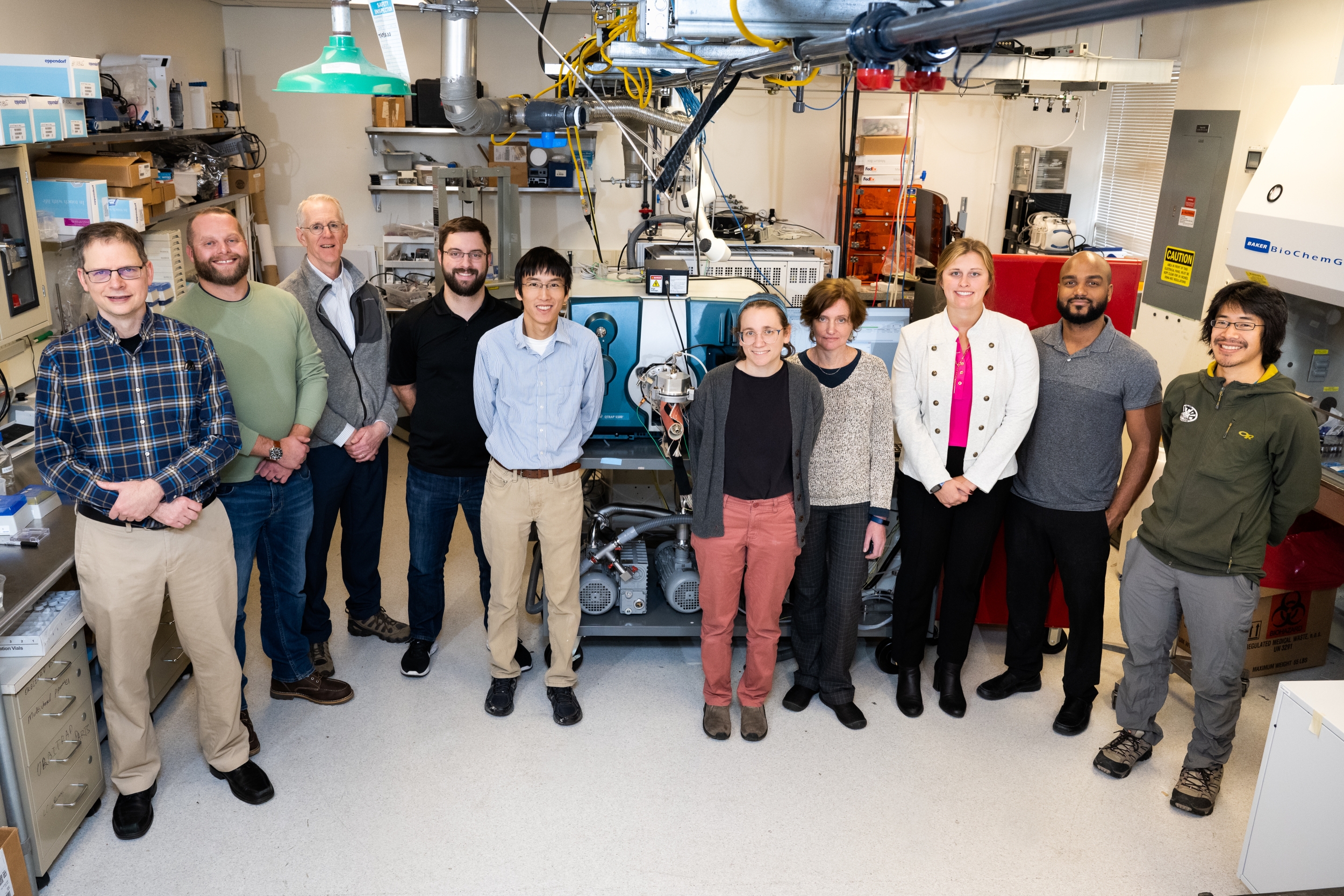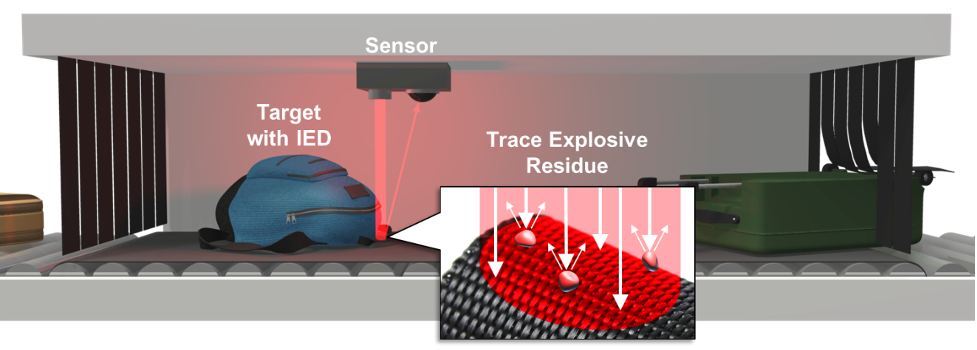Researchers seek to improve the speed and safety of airport security screening

For decades, airports around the nation have employed sensitive canine noses to detect concealed explosives. While this four-legged fleet has been effective and efficient, researchers have yet to build a mechanical method that can mimic their abilities.
Sasha Wrobel and Ta-Hsuan Ong are leading a team of researchers from Lincoln Laboratory’s Biological and Chemical Technologies Group to try to find a way. The team’s research builds on the Laboratory’s ongoing work to create and use a mass spectrometer to help train bomb-sniffing dogs, a project that is supported by the Department of Homeland Security’s (DHS) Science and Technology Directorate (S&T) Detection Canine Program. Wrobel and Ong are using the spectrometer to measure explosive vapors in order to understand the requirements for creating an operational explosive detection system. This system would work in tandem with the canine fleet to improve current airport security systems.
The DHS S&T is also sponsoring this work through the Next-Generation Explosives Trace Detection (NextGen ETD) program, which was launched to stay ahead of the evolving landscape of explosive development from adversaries both within and outside of the country.
Vapor footprints
Airports have two layers of carry-on baggage screening. One is when passengers place their belongings on a conveyor belt that passes through an X-ray machine. Another is when a bag gets pushed to the side and a Transportation Security Administration (TSA) agent opens the bag to check the contents and uses a swab on the bag to search for explosive residues. In some cases, canines also play a role in security screening as a complement to swabbing.
While the swabs detect explosive residues through contact and chemical analysis, canines detect them by sniffing for vapor signatures. The air is full of particles and gases, such as water, acetone from plants and trees, and even ethanol from hand sanitizer. Explosives also leave their mark in the air. Non-contact detection that uses these vapor signatures has the potential to be much quicker than swabs. Wrobel, Ong, and the team are searching to understand the technology specifications needed to do this by collecting signature data with the spectrometer.
"The mass spectrometer samples the air around an item and then ionizes the vapors given off by the sample," Wrobel says. "Depending on how these chemicals ionize, we can identify the chemical vapors by analyzing the mass, charge, and fragmentation patterns reported in mass spectra data."
So far, the research team has conducted three phases of tests. The tests were conducted at the University of Rhode Island’s explosives test range, which is part of Northeastern University’s Awareness and Localization of Explosives-Related Threats (ALERT) program, a multi-university DHS Center of Excellence. At the range, the team used the mass spectrometer to measure the air around nearly 100 different explosive samples concealed in various packaging configurations.
They collected several thousand measurements to understand how the different sample configurations influence the vapor signatures of concealed explosives. The team also plans to use this data to evaluate how data processing algorithms impact instrument and detection performance.
The end goal is to use the data that the team collected to build a list of requirements for developing an operational instrument. The DHS can use this list to decide how to proceed in contacting industry partners to develop the necessary technology and in coordinating their efforts with similar ones in Europe, led by the European Civil Aviation Conference. While there is much more work to do before the team can fully understand what it might take to build a non-contact detection system, they are hopeful.
"Developing and improving methods for explosives detection would streamline passenger experience and safety during airport security screening, while also supporting technology to remain resilient against new and evolving security threats," Wrobel says.

Detecting from all angles
The vapor detection research is just one example of the Laboratory’s involvement in the NextGen ETD program. The Biological and Chemical Technologies Group is also involved in a project to create more effective swabs for security checkpoints and is exploring whether infrared lasers could be used to detect explosive particles on luggage.
"The core technology is called longwave infrared imaging," says Bill Barney, who leads the infrared laser program. "It uses a laser that is scanned over a surface, and the scattered laser light has a spectrum to it. Some of the wavelengths of light in that spectrum are absorbed by explosives, which means the spectrum contains a fingerprint of the explosive that we can detect."

However, the infrared method is complicated by clutter and false alarms. Some materials absorb the light in a similar way to explosives, so there is a need to be able to differentiate them. Barney and his team have turned to machine learning to solve this problem, which is better at unraveling complex data and making connections between data points that humans may not see.
"Last year, we were very successful in detecting low levels of explosives on our test samples, which is promising," says Barney. "But there's a lot of engineering and science left to do before you would be able to get this kind of system working in an airport."
Rod Kunz, who is an associate leader of the Biological and Chemical Technologies Group, says that Lincoln Laboratory’s involvement in the NextGen ETD program fills an important niche.
"The main performers on this program are industry — companies that sell things to the TSA to use in airports," Kunz says. "Our role is to try to understand if other technologies would work for airport needs, if there are other advanced concepts that should be sent to industry for them to respond to, or if there are directions that industry just doesn't think are worth pursuing that the Laboratory could be trying instead. We are trying to plug in the gaps that industry and the normal procurement processes are unable to do."
Inquiries: contact Anne McGovern
